If neither of these options works, producers may have to suspend their operations or shut down permanently. A thorough understanding of product costs allows businesses to create realistic budgets and develop accurate financial projections. With a clear picture of their costs, they can allocate resources effectively, make informed investment decisions, and plan for future growth and expansion.
Direct costs for manufacturing an automobile, for example, would be materials like plastic and metal, as well as workers’ salaries. Total product costs can be determined by adding together the total direct materials and labor costs as well as the total manufacturing overhead costs. To determine the product cost per unit of product, divide this sum by the number of units manufactured in the period covered by those costs.
It helps control costs by identifying areas of inefficiency, reducing waste, and optimizing resource utilization. It allows businesses to make informed pricing decisions based on a thorough understanding of the costs involved. Additionally, product costing aids in financial planning, budgeting, and forecasting, ensuring that businesses have a realistic understanding of their costs and can allocate resources effectively. Ultimately, product costing provides businesses with the necessary insights to improve profitability, make strategic decisions, and maintain a competitive edge in the market.
The weight of wax and oil used in each candle can vary depending on the candle’s size. The calculation provided only considers the cost of wax and fragrance oil used in a production month but does components of product cost not provide information on the number of candles produced. Let’s imagine two hardworking employees who put in a total of 400 hours of labor each month and earn a just wage of $12 per hour.
Getting the cost estimate wrong can lead to commercial disaster for even a perfectly viable product. Understanding the components of cost, how they are calculated, and how cost records should be maintained must be given the importance it deserves. Collaboration https://business-accounting.net/ between departments, such as finance and production, can help ensure that the costs are accurately tracked and allocated. It can also facilitate communication and decision-making and help identify areas for cost reduction or optimization.
- Cost of goods sold (COGS) is calculated by adding up the various direct costs required to generate a company’s revenues.
- Only then can you be sure about the total product cost, and finally be able to price your product at a level you are sure will earn you profits.
- From the details from the bakery that manufactures gourmet cakes, calculate product cost.
- Direct labor cost includes the remuneration paid to convert raw materials into finished products or alter the construction, composition, or condition of the product manufactured by an undertaking.
A product cost is an expense capitalized as inventory when it gets incurred to manufacture a product. In other words, these costs are required to make a finished good and are capitalized on the balance sheet since they will benefit the company in the future. Once you have analyzed your company’s books and divided your costs into direct/indirect and fixed/variable costs, you can use this information to calculate the breakeven point, one of CVP’s pillars. This is one metric of equal interest to both business owners and investors. Let’s say a piece of machinery on your phone’s assembly line is used for 4,000 hours a year, rolls out 100,000 phones, and you incur ~$10,000 in repairs and maintenance costs annually on it. In that case, your repairs and maintenance overhead is $2.5 per machine hour or $0.1 per unit.
LogRocket generates product insights that lead to meaningful action
This can lead to differences in the cost of goods sold and overall profitability, depending on changes in inventory levels and production volume. COGS refers to the expenses related to producing and selling a product, while COGM pertains to manufacturing the same product. Product cost and period cost are both important concepts in cost accounting, but they represent different expenses. When it comes to pricing, many stakeholders have a say in how much a customer should pay for a product.
Data like the cost of production per unit or the cost to produce one batch of product can help a business set an appropriate sales price for the finished item. While many types of production processes could be demonstrated, let’s consider an example in which a contractor is building a home for a client. The accounting system will track direct materials, such as lumber, and direct labor, such as the wages paid to the carpenters constructing the home. Along with these direct materials and labor, the project will incur manufacturing overhead costs, such as indirect materials, indirect labor, and other miscellaneous overhead costs. In traditional costing systems, the most common activities used as cost drivers are direct labor in dollars, direct labor in hours, or machine hours.
What is Product Cost?
They pay $1,000 for rent, $500 for utilities, and $250 for instrument maintenance. Additionally, external factors like Product design, complexity, and supply chain disruption impact the pricing/ cost structure of the product. It also enables companies to evaluate their performance and make necessary adjustments to improve profitability. Our mission is to empower readers with the most factual and reliable financial information possible to help them make informed decisions for their individual needs.
Some cost-saving measures, like hiring junior developers, may result in several issues later on in the development process. Understanding how to properly categorize these costs helps you optimize your spending, prioritize investments, and ultimately, drive the company’s growth and success. The beginning balances and purchases in each of these accounts are illustrated in Figure 4.3.4.
Do you own a business?
The average price of all the goods in stock, regardless of purchase date, is used to value the goods sold. Taking the average product cost over a time period has a smoothing effect that prevents COGS from being highly impacted by the extreme costs of one or more acquisitions or purchases. Conversion costs are the components to change raw materials to finished goods.
Accurate product costing enables businesses to have better control over costs, identify cost-saving opportunities, and improve overall profitability. By understanding the individual cost components, such as labor and materials, businesses can make informed decisions to optimize expenses and maximize profit margins. Almost every physical product involves direct materials, direct labor, and overhead costs, which might include indirect labor and additional expenses like utilities and equipment depreciation. Direct materials are those materials that can be directly traced to the manufacturing of the product. Some examples of direct materials for different industries are shown in Table 4.2.
At this stage, the completed products are transferred into the finished goods inventory account. When the product is sold, the costs move from the finished goods inventory into the cost of goods sold. With a solid financial plan in place, you can identify which components are driving up your product costs and adjust accordingly. You may need to buy state-of-the-art equipment for your developers and other team members. In this guide, we’ll show you how to calculate product cost and how doing so can help you make informed decisions about crowdfunding, refine your pricing strategy, and improve profitability.
What is the analysis and classification of costs?
The total product costs you have incurred for any given period should be reported on the income statement only when sold. This will give you an accurate view of your cost structure, and it’s also essential information when calculating taxes owed or other financial statements. Process costing is used to calculate the cost of producing a large number of identical products.

